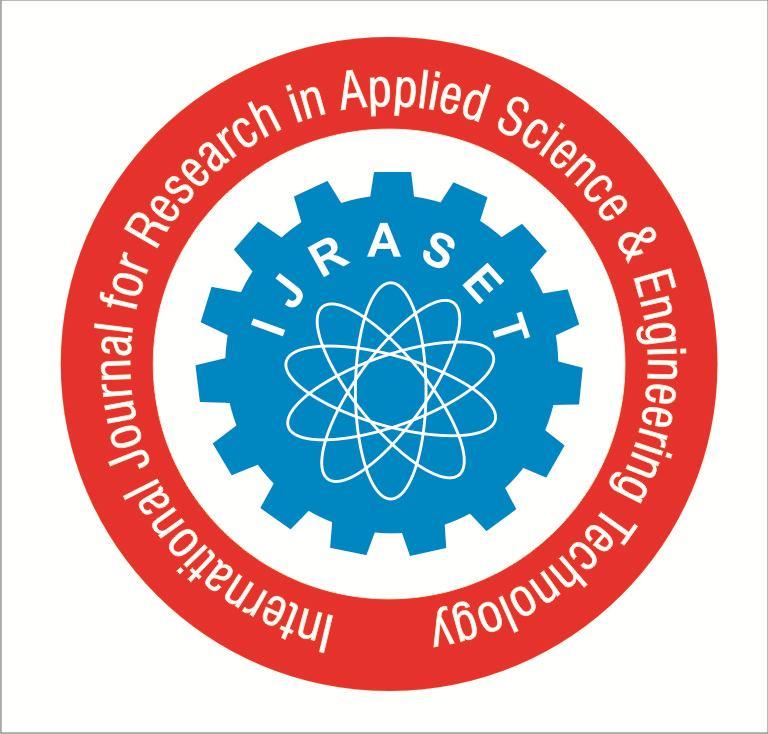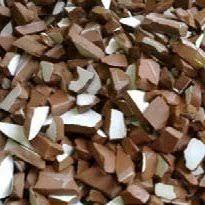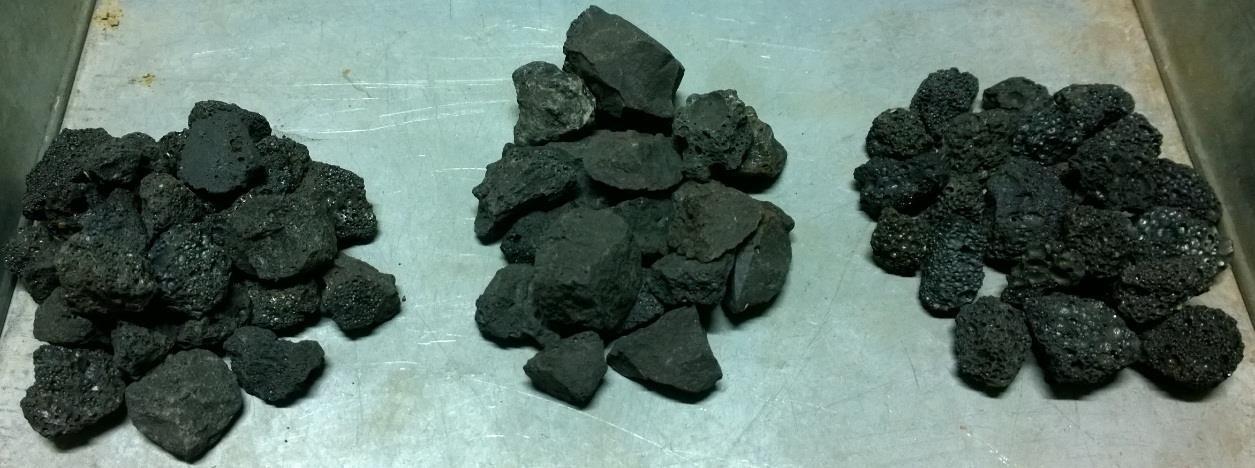
5 minute read
Investigation on Partial Replacement of Various Waste Materials as Coarse Aggregate in Concrete
from Investigation on Partial Replacement of Various Waste Materials as Coarse Aggregate in Concrete
by IJRASET
R. Sujitha1 , Dr. P. SivarajaN2
1, 2Department of Civil Engineering, Annamalai University
Advertisement
Abstract: The reuse of ceramic waste and iron slag waste as a substitute for coarse aggregate in concrete has been investigated. The current option for disposal of ceramic waste is landfill and this waste is of three types, namely ceramic tiles, clay bricks, flower potspots. Ceramic tiles were obtained from construction and demolition sites, which caused environmental pollution utilizationation of crushed tile as a coarse aggregate in concrete would also have a positive effect on the economy. And slag is considered a third-class hazardous waste that requires a large place for dumping. To transform the slag into an environmentally friendly resource and save the environment from pollution, the possibility of using slag as coarse aggregate cannot be overlooked. In the present study, ceramic tile waste and iron slag were used in concrete as a replacement for natural coarse aggregate with 0%, 10%, 50%, and 100% of the substitution, and M25 grade concrete was used. The concrete modulus was cast and tested for compressive strength after a curing period of 15 and 21 days.
Keywords: coarse aggregate, fine aggregate, ceramic waste, Iron slag, water cement ratio.
I. INTRODUCTION
The reutilization of waste materials as new construction materials is the main objective for sustainable construction activities in the future. The concerns related to sustainability and limited natural resources along with the use of recycled and secondary aggregates are of utmost importance nowadays. Materials such as construction and demolition wastes (C&D wastes) and organic wastes (e.g., rice husk) have been introduced in the production of concrete for both reasons of environmental sustainability and improvement of concrete properties. However, ceramic waste and iron slag waste are not commonly used in the making of concrete. Ceramic wastes have the possibility to be incorporated into concrete due to their pozzolanic properties. They are also known for their resistance to abrasion and lower-density properties, which can be expected to improve the quality of concrete. The necessity of utilizing recycled aggregates and industrial wastes in civil works is due to the great volume of waste materials generated. Applications for fills and embankments, road base and sub-base layers, and as aggregate for concrete are some possible destinations for recycled aggregates and industrial wastes. Because of the large volume of materials required for construction and pavements being favorable structures recycling g of a wide range of waste materials, the possibility of replacing coarse aggregate with other waste materials has been investigated. Gravel, crushed stone, granite, and limestone are conventionally used as coarse aggregate in concrete production (N. Sivachandiran A. Magesh; 2018) On the other hand, the production and utilization of concrete are rapidly increasing, which results in increased consumption of natural aggregate and construction waste as the largest concrete component. For example, two billion tonnes of aggregate are produced each year in the United States; production is expected to increase to more than 3.5 billion tonnes per year by the year 2030. (Priyanka Kusum, Sayed Tabish Quadri 2021, Dr. Varinder Singh 2019). Demolition of old and deteriorated buildings and traffic infrastructure and replacement with new ones is a common occurrence in many parts of the world today. The main reasons for this situation are change of purpose, structural deterioration, management of a city, expansion of traffic directions and increasing traffic loads, natural disasters (earthquakes, fires, and floods), etc. For example, about 850 million tonnes of construction and demolition waste are generated each year. In the USA, the waste produced from building demolition alone is estimated to be 123 million tonnes per year. The most common method of managing this material has been through its disposal in landfills. In this way, huge deposits of construction waste are created, consequently becoming a special problem of human environmental pollution, (Bikash Subedi, Dhurba Kumar 2020) henceforth laws have been put in practice time to restrict this waste in the form of prohibitions or special taxes for creating waste areas in developed countries. The present study aims to investigate the partial replacement of coarse aggregate by waste material in concrete.
II. MATERIALSANDMETHODS
The experiments were performed to analyze the strength of the concrete obtained from the replacement of coarse aggregate by various waste materials at various mixed proportions.
ISSN: 2321-9653; IC Value: 45.98; SJ Impact Factor: 7.538
Volume 11 Issue III Mar 2023- Available at www.ijraset.com
A. Ceramic title waste and its Properties

A ceramic material is an inorganic, non-metallic, often crystalline oxide, nitride, or carbide material. Elements, such as carbon or silicon, may be considered ceramics. (MD Daniyal et al 2015) They are brittle, hard, strong in compression, and weak in shear and tension. Other than their normal use as filling material, ceramic wastes are classified as non-recyclable waste and have the potential to be used in the production of concrete and to improve its strength and durability, according to research on recyclable construction and demolition (C&D) wastes (S. Sharmiladevi, Dr. K. Ramadevi 2017). However, there are no guidelines or standards for the usage of these wastes in concrete. In addition, the local construction industry does not have the knowledge and experience to utilize the material.
Some of the highly desirable properties of, ceramic is:
High Strength.
High Fracture Toughness.
High Hardness.
Excellent Wear Resistance.
Good Frictional Behavior.
Anti-Static
B. Iron slag waste and its properties: Slag is a by-product obtained as a leftover in steel production after a desired metal has been separated (i.e., smelted) from its raw ore, and it is usually a mixture of metal oxides and silicon dioxide. (Khalid Raza et al 2012) Iron slag is considered third-class hazardous waste, which may require a large place for dumping. (R. Kamala et al 2012) Traditional coarse aggregates are very costly and withdrawn every day resulting in exhausting eserves, which will pose a great threat in near future. As per the survey conducted by Safe, Inc. (2002), a single ferroalloys industry produces 220,000 tonnes of low-carbon slag per year.

ISSN: 2321-9653; IC Value: 45.98; SJ Impact Factor: 7.538

Volume 11 Issue III Mar 2023- Available at www.ijraset.com
C. Cement
Cement is used as a binding material in concrete, where strength and durability are important considerations. The concrete is made with ordinary Portland cement 53 grade conforming to IS:12269-1987. Consistency test, setting time test, and Specific gravity test were performed.
D. Aggregates
The size of aggregates used is 20 mm, and the grain size of sand is used.
1) Fine Aggregate: It consists of small, angular, or grounded grains of silica (SiO2) and is formed by the decomposition of sandstone under the influence of weathering agents. A size that is less than 4.75 mm is called fine aggregate. River sand is used as fine aggregate, conforming to the requirements of IS 383. Before using that, it can be properly cleaned by sieving and washing to eliminate the impurities.
2) Coarse Aggregate: coarse aggregate may be in the form of irregularly broken stones or naturally occurring rounded gravel. Coarse aggregate refers to materials that are too large to be retained on a 4.75mm sieve. It acts as the main filler and forms the bulk of some of the adhesive, some of which adheres in the form of film. Aggregates are used to balance the shrinkage and home changes of cotton that conforms to IS: 383.
Water plays an important role in the mixing, laying, compaction, setting, and handing of concrete. Water influences the strength development and durability of concrete. On tiny drinking water can be used for preparing concrete; guidance on examining the stability of the available water for construction can be obtained from the following specified data in IS 456- 2000: The pH value of water should generally not be less than 6.
Waste ceramic tiles are crushed uniformly to about 20 mm size manually using a hammer and sieved through a 20 mm sieve. Various tests were performed on the ceramic tile waste, such as specific gravity, water absorption, and an impact test. Composition of materials for ceramic waste:
Iron slag is a by-product of steel that is produced during the separation of molten steel from impurities in the steel-making furnace (Keerthi Kumar et al. 2017, P. Vignesh Kumar, and R. Ranjith Kumar, 2016). The slag occurs as a molten liquid and is a complex solution of silicates and oxides that solidifies upon cooling.
Composition of materials for ceramic waste


